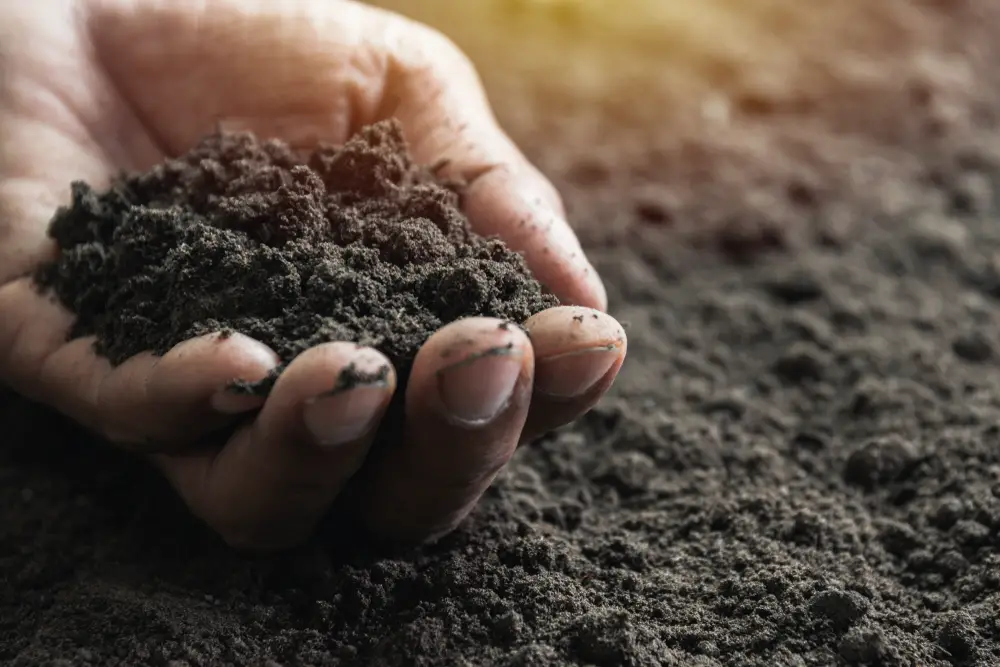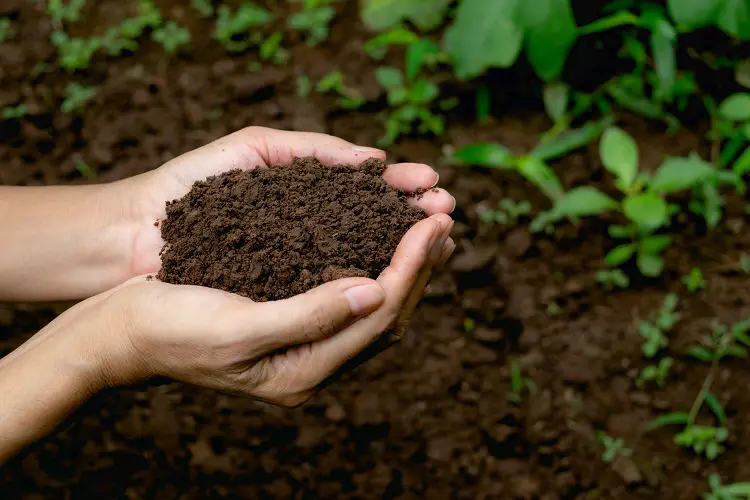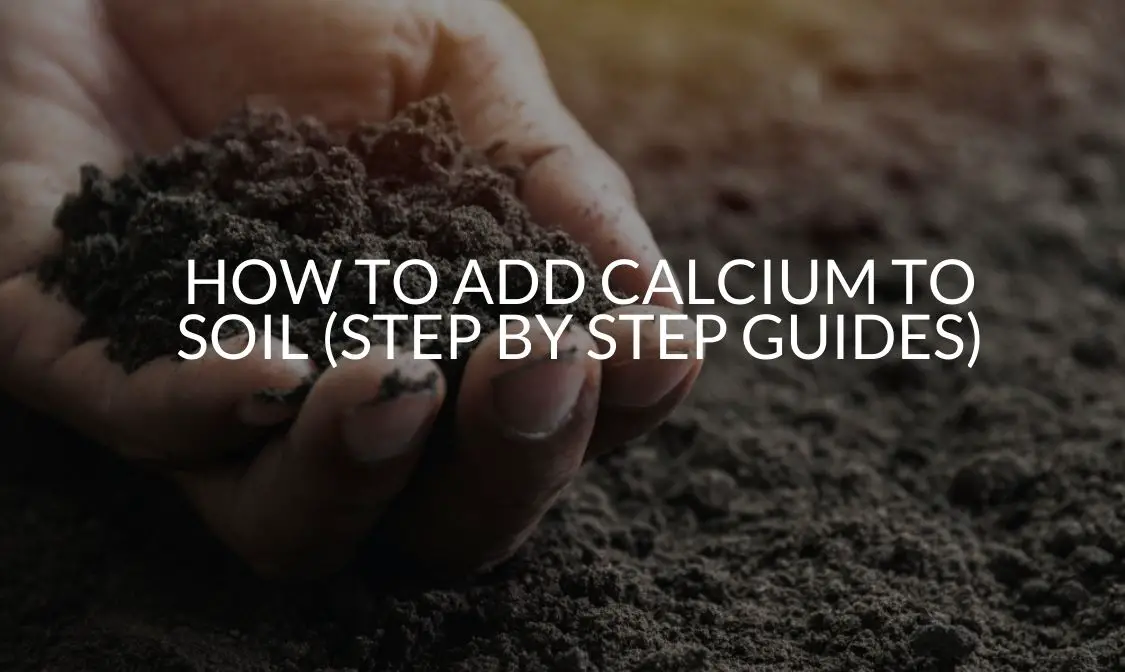When trying to add calcium to your soil, you must add the right amount. Too much can do more harm than good, and too little will not be effective.
There are many ways you can add Calcium: Limestone (calcite), oyster shells, eggshells, plant ashes/coals from fire pits- but they all have different levels of effectiveness so read on below before making a decision!
Read on to discover how to add Calcium to your soil and what benefits it may have for your plants or crops. Additionally, we will discuss various ways to add Calcium and other nutrients to your solid and answer some frequently asked questions about doing so.
How To Add Calcium To Your Soil
Adding Calcium to your soil, whether you are using it for a large area of crop or a small garden, can be done by adding various substances to your soil. Limestone, Eggshells, and several fertilizers can successfully add the calcium your plants or crops need to your soil.
Adding Calcium To Your Soil With Limestone
Generally speaking, about 1200 pounds of limestone should be added for every ton of manure or compost. This will add a total of about 800 pounds calcium, or about 150 pounds per acre. On a smaller scale, around 20 pounds of ground limestone can work for your lawn or garden.
Limestone (calcite) has high calcium carbonate content when crushed up. Adding limestone to your gardens takes about twenty to fifty pounds of limestone for every thousand square feet. Likewise, for larger crops, a much larger amount of limestone can be added.
If you’re adding calcium to your soil, you’ll need:
- A truckload of limestone for every ton of manure or compost, or appropriate measurements for smaller areas of soil.
- Straw to add on top.
- Some water if the calcium is going in an area that does not have enough soil moisture. (optional)
If your soil’s pH level is too high – add lime and gypsum. If it’s too low, add peat moss or bonemeal. If there are no nutrients available, add fertilizer with nitrogen, phosphorus, potassium, and trace minerals like boron which all plants require for healthy growth.
It’s also essential that once the calcium has been added, a layer of straw needs to cover it to protect from any rainwater washing out some part of the calcium deposit before it fully stabilizes. This will also protect against hungry animals who might get at your newly delivered nutrients.
Using Egg or Oyster Shells To Add Calcium
Eggshells are another great option, but they should also be crushed before being added to release their inside content that strengthens plants and retains moisture. Another tip would also be planting things like kale which requires more calcium than other plantings due to their dietary needs.
Adding oyster shells to the soil is an excellent way to add calcium because it can be done by adding 100 pounds of the shell for every 200 square feet and then turning them into your soil with a plow or tiller.
A couple of methods of using this type of organic gardening are:
- Adding them into the soil and putting a few inches worth at a time (because they won’t break down like other fertilizers)
- Burying some eggshells near where you’re planting a new garden bed so that their nutrients become available when planted with the seeds – add about an inch’s worth every year.
Eggshells can be used as a natural fertilizer to add calcium to the soil but should not replace synthetic fertilizers because they won’t break down as other fertilizers do.
How To Add Calcium To Soil Without Raising pH?
Make sure when adding calcium and any fertilizer that it doesn’t have an acidity value above six. Otherwise, it won’t do its job correctly because there will always be too much around for the plant roots to absorb.
So far, the best way seems to mix lime into already existing soil before planting anything else or adding it to new soil before planting. This will add calcium without making the pH level jump too much and potentially harming sensitive plants.
Safely Maintaining or Adjusting pH Levels
The safest way is not to use many fertilizers in general, which may contain heavy metals or other toxins that can harm your garden in different ways, such as disrupting their ability to produce chlorophyll (green pigment) for photosynthesis.
In a greenhouse, soil pH impacts calcium availability to plants because it is usually measured as an acid or base measurement on a scale of 0-14, with pure water being neutral at around seven (pH=0).
Some best practices for maintaining or adjusting your soil’s pH levels include:
- Adding lime or limestone depending on the soil type to add calcium.
- Adding oyster shells for a high pH level and more iron in your soil.
- Adding compost if you don’t know what effect raising the pH will have on your soil’s composition.
If your soil has too much lime in it, then adding more may add excessive amounts of calcium and raise your pH higher than desired. That can have negative consequences such as stunted growth or yellowing leaves due to insufficient iron intake from the plant’s roots.
You might want to add some compost into this mix for better results if you don’t know how high the pH will be affected by using additional limestone or oyster shells again, depending on what level you are starting with.

How To Add Calcium To Soil Quickly?
If you’re short on time, many fertilizers are available at garden centers that add calcium and other nutrients to plants. Many fertilizers add nutrients like calcium; this would be the easiest way (but expensive) if you don’t have time or patience to break eggs into pieces yourself before adding them into the soil.
Quickly Adding Calcium To Soil With Fertilizers
Fertilizers will add Calcium to your soil quickly and efficiently. The best fertilizers to look for are those that add calcium, such as lime or gypsum. Fertilizers come as synthetic, natural, or organic.
You could add any of these to your garden soil by mixing it with compost and making sure there is enough nitrogen for the plants to grow. Not all fertilizers work for all types of soil or plants.
Synthetic Fertilizers Add Calcium To Soil Quickly
Synthetic chemical fertilizers add calcium rapidly but are not natural. Organic fertilizers take time to develop levels of available nutrients in the soils and don’t always work as quickly on certain types of plants.
Chemicals like pesticides add calcium rapidly because they break down more easily than natural products, like manure which takes a long time to get the right level of nutrient availability (calcium) in soil.
Synthetic chemicals also add other essential minerals needed for healthy growth or protection from bugs and pests. Hence, it is worth considering what is being added to the soil through fertilizers.
Synthetic fertilizers, such as ammonium nitrate have their disadvantages. They add a lot of salt to a soil that can be detrimental to plants and can even lead to problems when combined with other chemicals in the environment.
Natural Fertilizers Add Calcium Slowly
Natural fertilizers add calcium slowly and can take up to three years for the soil to benefit. Add calcium gradually to your soil to prevent a high nutrient level from damaging plants – this is called “burning” them.
Gradually add small amounts of lime, gypsum, or other fertilizers with calcium on top of the ground so they will dissolve over time and add nutrients steadily without affecting pH levels too much.
This also keeps you from adding too many minerals that might burn your plants if added at once. Gradual addition allows chemical reactions between certain elements like nitrogen and phosphorus with available oxygen in the air present naturally during decomposition.
Organic Fertilizers Add Calcium Over Time
Organic fertilizers take time to develop available nutrients in the soils and don’t always work as quickly on certain types of plants. For best results, use a mix that includes organic matters like compost or manure with chemical fertilizer such as lime or gypsum for quick absorption.
Organic fertilizers add calcium over time and add to the soil. Gradual addition allows chemical reactions between certain elements like nitrogen and phosphorus with available oxygen in the air present naturally during decomposition. Organic fertilizers add calcium over time and add to the soil’s fertility.
Tips for adding calcium to soil with fertilizers:
- Add enough fertilizer to give plants about 24 ounces per 100 square feet, or roughly one handful for every four inches by 18 inches area.
- When it rains, some calcium will dissolve into the ground and become available for plant roots.
- After you’ve spread these materials onto your garden bed surface, water them until they are wet but not saturated so that there is no standing water left behind.
- If you want assured success, then amending soils should be done annually because heavy rain can wash away nutrients in the soil from time to time.
Organic fertilizers take time to develop available nutrients in soils, so they don’t always work on particular types of plants when applied alone. Best results come from combinations that include organic substances such as compost or manure along with chemicals such as lime or gypsum.

Frequently Asked Questions
Adding Calcium to your soil can be a delicate and occasionally complex process. Here are some frequently asked questions about various ways to add Calcium to your soil.
Will Powdered Milk Add Calcium To Your Soil?
It is highly recommended that powdered milk add calcium to your soil if you don’t want an acidic pH level in your garden beds or trees and plants. Powdered milk will also add protein for the plant to use as it grows.
As a rule of thumb, around 25% more than needed should be added, so make sure two cups per square foot are applied when applying additional treatments such as crushed oysters shells or dolomitic limestone and seashell powder.
Certain varieties like roses, fruits trees (such as apple), vegetables such as cabbage and broccoli, any plant with edible leaves] will need an increased dosage of one tablespoon per square foot annually or two cups per cubic meter applied at six inches deep into dirt bed
What Fertilizer Is High In Calcium?
Mobile Cal-Mag is a bioavailable formulation that delivers calcium and magnesium to boost plant health. It also contains amino acids, which, in addition to aiding nutrient uptake, help increase Brix levels which leads to better-tasting fruits and vegetables.
The solution to a calcium deficiency is to add more of the nutrient, which will be either in an organic or chemical form. At the same time, you can add any fertilizer with high levels of calcium like ashes from your fireplace (avoid using coal). There are specific types that should not harm plant life and could add additional benefits for those plants.
Rock phosphate and dolomitic limestone have higher percentages of calcium when compared to other fertilizers such as ammonium sulfate, potassium nitrate, or urea-ammonium nitrate combinations.
Recap
When trying to add calcium to your soil, you must follow the proper guidelines. Too much can do more harm than good, and too little will not be effective at all. There are many ways you can try adding Calcium as a fertilizer, but they all have different levels of effectiveness.
Some calcium fertilizers add more of the chemical element to your soil, while others will add a wide variety of nutritional needs for plants. It is best to look at what you want out of adding Calcium and choose one that can fit all or most of those needs.
Regardless, you must make sure that there are no harmful chemicals in any fertilizer containing calcium, as these would have adverse effects on both animals and humans alike. Choosing which method to add Calcium to your crops or gardens is dependent on what type of plants you are growing.

